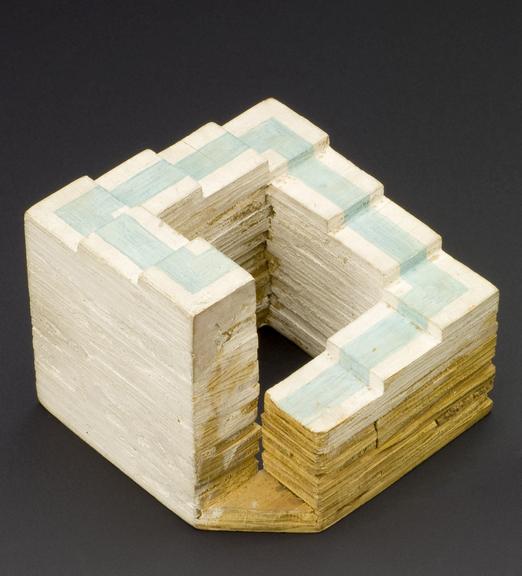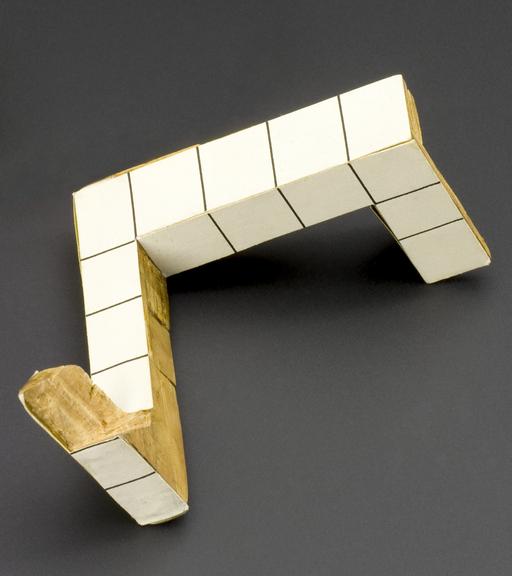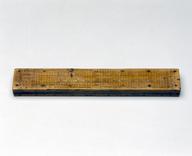

First models of the 'impossible triangle' and 'impossible staircase'
- designer:
- Roger Penrose and
- Lionel Sharples Penrose






First models of the 'impossible triangle' and 'impossible staircase', designed and constructed by Roger Penrose and Lionel Sharples Penrose FRS, England, 1955-1959
First models of the 'impossible triangle' and 'impossible staircase', designed and constructed by Roger Penrose (b. 1931) and Lionel Sharples Penrose FRS (1898-1972), England, 1955-1959
The Penroses were inspired by the Dutch artist M C Escher (1898-1972) and vice versa. In 1954 Roger heard a lecture by Escher, and then drew the impossible triangle in the form with which we are now familiar. It had actually previously been drawn, unknown to him, in another form by the Swedish artist Oscar Reutersvard. The Penroses published in 1958, sending Escher a copy. Escher modelled his lithograph Waterfall on the triangle in 1961, adding polyhedra ‘only because I like them’. While it is easy to draw the impossible triangle in 2D, the Penroses also made a 3D model to be viewed from a certain position.
In the same paper as the impossible triangle, the Penroses introduced the impossible staircase. ‘Actual objects, suitably designed, when viewed from particular angles, can give exactly the same impression as inconsistent drawings.’ This model was photographed so as to give the impression of an impossible staircase. Again, Escher used the concept in his famous Ascending and Descending, published in 1960.
Details
- Category:
- Mathematics
- Object Number:
- 1982-899
- type:
- model - representation and optical puzzle
- credit:
- Newman, M.




